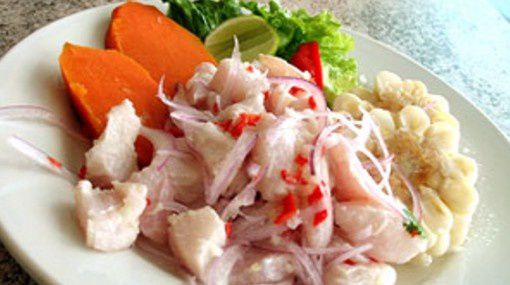Food Shopping
In the US, you buy your food at grocery stores, co-ops, or farmer's markets, or the occasional specialty market (for Chinese vegetables or authentic Mexican chilis, for example). Among all those options, you can find pretty much any ingredient your heart desires, including imported products, organic produce, every variety of cheese (swoon), etc. And all at extremely reasonable prices. Not to mention rotisserie chicken! Believe it or not, Peru doesn't have that and I have to say I miss it. When you make a grocery run but really don't feel up to cooking that day, it is the absolute best thing.
This platter would probably cost my whole month's salary.
Now, Peru has grocery stores, naturally. But they are expensive: they range from pricey to who can even afford this?? Even the "cheap" grocery store is expensive in my opinion. And when it comes to imported products, forget it. There are so many things I would love to buy but don't because they are just too overpriced here. I have all but given up cheese. Sour cream? Pipe dream. Peanut butter costs $8 for a medium-sized jar of mass-produced stuff. I haven't seen organic or natural chicken stock anywhere and am just about at the end of the jar I brought back from the US. Think raspberries are expensive in the states? Think again: they're twice as expensive here. And chocolate? While Peru is a major producer of both cacao and coffee beans, the finest products are all exported. Good-quality chocolate and coffee is just as expensive here as in the states, if not more so.
Now, this whole stall would cost less than half of that.
The corner stores don't have quite as much variety, especially for fresh produce, but they have everything from toilet paper to beer to salt, and you're never more than a couple blocks from one. There are five within a five-minute walk of my apartment. It's one thing I'm going to miss terribly when I leave.
Eating Out
Lima's restaurant scene is exploding, along with international recognition. Two Peruvian restaurants were among the top twenty in the world, according to the San Pellegrino rankings that came out last month. Peru has a rich culinary tradition with many different influences, and each region has its own specialties. The quality of local ingredients and the expertise of the chefs means that at almost any restaurant you choose, the meal will be exquisite.
Ceviche from a Peruvian chef was named the tastiest dish in the world according to Chowzter.
There's no denying that Peruvian food is mouth-watering-ly delicious. However, if you eat out a lot, your pocketbook will take a hit. The average price for a good meal out is around S/.30, not including a beverage, which is around $12. It doesn't sound so bad, but considered in terms of local earnings, it's prohibitively expensive for a lot of people. And the high-end restaurants, including the two in the top twenty best restaurants in the world? They'll run you much more, so unless you're here on a fat expat package or practice law, stay away.
The other thing I miss about eating out in Lima is variety. There's one Thai restaurant in Lima, and luckily it's within walking distance! There's also one Indian place. But in general, the variety of ethnic restaurants that is so prevalent in the US simply doesn't exist here.
Oh, and I definitely can't deny that I really crave good, authentic pizza (very underwhelmed with most of the pizza here) and a good burger. What I'd kill for is a juicy burger topped with blue cheese, a side of sweet potato fries, and a kolsch.
Which brings us to...
Point: US, for variety, price point, and burgers (joking, except not really). This was a close one, but ultimately I miss being able to find specialty ingredients and being able to eat out without breaking the bank. I'm sure any Peruvians reading this will be scandalized, and I'm sure I'm going to get flak for this!



No hay comentarios.:
Publicar un comentario